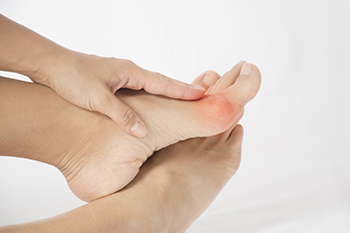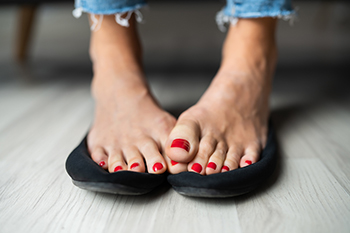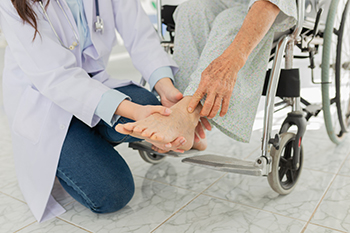
People can have foot pain when it is mandatory to stand during the work day. Research has indicated there is an increased number of sick days that are used each year as a result of working on the feet. Some of the foot conditions that develop can include bunions, foot pain, Achilles tendonitis, and poor circulation. These may happen from standing or walking on uneven surfaces, and wearing shoes that do not fit correctly. It is beneficial to elevate the feet as often as the day allows, and performing simple stretches may provide mild relief to the feet. Wearing compression socks or stockings may help to prevent poor circulation, and it can help to wear lower heels. If you would like more information about how to protect your feet while working, please ask a podiatrist who can offer you helpful tips.
While working on the feet, it is important to take the proper care of them. For more information about working on your feet, contact one of our podiatrists from Associates in Podiatry. Our doctors will treat your foot and ankle needs.
Working on Your Feet
Standing on your feet for long periods of time can cause stress and pain in your feet. Your whole body may experience change in terms of posture, back pain, bunions, callouses and or plantar warts. There are ways to avoid these conditions with proper foot care, smart choices and correct posture.
Positive Changes
Negative heeled shoe – Choosing this shoe type places the heel slightly lower than the ball of the foot. These are great for overall foot health. Find shoes that fit you correctly.
Go barefoot – Our feet were not designed to be enclosed for all hours of the day. Try to periodically expose your feet to air.
Eliminate Pain
Foot Exercises – Performing simple exercises, incorporating yoga and doing stretches are beneficial. This will allow increased blood flow to the area and muscles of the foot.
Achilles tendon – Stretching the foot out flat on the floor will relax the calf muscles and tendon. These exercises can be performed almost anywhere. Make sure you add these exercises to your daily regimen.
With a little bit of this information and knowing more about foot health, you will notice changes. Foot stretches and proper footwear will help with pain and prevent further issues.
If you have any questions please feel free to contact our offices located in Pittsburgh-South Hills, and Pittsburgh-Bellevue, PA . We offer the newest diagnostic and treatment technologies for all your foot and ankle needs.





